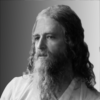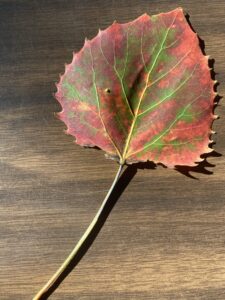It was easy to be friends with Jack and Kathy. Just married, they had recently moved to Vermont, along with their two playful dogs. They were healthy and young, strong, meditators, and worked with people with developmental disabilities They were all-around good folks and fine neighbors. Their future looked bright and sunny.
Just before Christmas, Jack climbed on a small stool so he could place the star atop their tree. It must have been quite a tree because Jack was over six feet tall. He slipped and fell off the stool, falling the short distance to the floor. He landed on one of the dog’s glass water bowls, which broke, slicing an artery at the top of his left arm. He bled to death in Kathy’s arms before the rescue team arrived.
All of us feel disturbed when confronted with seemingly random tragedies like the horrific death of my friend. Rightfully so, such events traumatize our sense of control and comfort which we so energetically maintain. The veneer of security is stripped when the world intrudes in ways we do not sanction. Yogis have consistently warned that our superficial lifestyles and psychological armor do not truly make us safe, they just help us temporarily ignore our pain, confusion, and loneliness. Shunryu Suzuki said, “Life is like getting on to a raft that will float out to sea and then sink.” This is a message most try not to hear; but it is the key to healing, liberation, and freedom.
In yoga, it is taught that there are two types of blindness. One is caused by darkness, the other is caused by light. The latter is considered more difficult to overcome because the darkness is obvious, light can be beguiling. A Gnostic tale tells that after his crucifixion, Jesus spent the three days before his resurrection traveling throughout the world offering salvation. The denizens of hell would not accept his offer of freedom. Not because they did not believe in his holiness, but because they refused to acknowledge they were in hell.
The spiritual path is not one of relaxing into false sentimentalism. The first chapter of the Bhagavad Gita, one of the quintessential yoga texts, is entitled, “The Yoga of Despair.”1 It is only by attending to despair that one can understand the teachings of the other chapters of the text – such as the yogas of wisdom, devotion, and service. Similarly, it is only by acknowledging our pain, loneliness, and confusion that we have a chance to bring about healing. Wounds that are kept covered cannot be touched by any healing balm.
Most people come to yoga because they are in pain on some level. Backaches, breakups, hurry, worry, fear and self-doubt make great motivators. For yoga to be effective, one must understand that gaining a tight butt and six-pack of “abs” will not suffice. One cannot heal, nor will world peace be magically attained, just because we put on stretchy pants and touch our toes. Practices such as breathing deeply, accepting your body, eating well, and thinking positive thoughts are all wonderful things and can have many positive benefits. They will not suffice, though, to heal the essential problem from which all pain arises.
The root of all of our problems related to life and death is based on what is called avidya. Vidya means “wisdom” and a is a negative prefix. Avidya, then, is a lack of wisdom. In yoga, wisdom is Self-realization. Avidya is not knowing your Self, your true identity. This can be very challenging to accept. We all have birth certificates and driver’s licenses and such, stating who we are. We have become convinced our biological and psychological stories are accurate descriptions of who we are. Like a baby duck who imprints on a zookeeper instead of the mamma duck, we are following around the wrong information, quaking after something that can never give us what we want.
This imprinting stays with us throughout our lives, resulting in our adopting patterns of behavior and beliefs that are not autonomously generated. Rather, they are based on collective memes, 2including the hopeful idea that death will be a gentle and timely passage. Most people harbor a false conviction they will die at the proper time, peacefully, surrounded by loved ones. The data indicates that the majority of people die in a hospital or similar institution, alone with the television playing in the background.
Yoga, like all authentic paths of transformation, is not a magic pill. Practicing yoga will not immediately alleviate all aches, pains, and suffering produced by avidya. Practicing yoga and meditation will, though, provide a systematic path for transformation. The body will become more comfortable, energy will increase, the mind will quiet and the heart open. It will take time and practice to bring about these results, but even a little practice can go a long way. If you practice just 10 minutes a day, at the end of a year you will have practiced over 60 hours. You can’t help but develop some degree of wisdom and devotion after investing that much time in spiritual growth.
In this world, there will always be a pain, illness, and death. Unpleasant and unplanned events will take place. When we understand the nature of our world, we can cease the Sisyphean labor of trying to find safety and security in an external world where none exists. There is, though, the possibility of balance, and proper inspiration to learn about the spiritual pilgrimage and then actually walk the path. The darkness of resistance prevents one from perceiving the truth that a spiritual path of liberation truly exists. The light of syrupy pop-psychology prevents one from addressing the pain that keeps one from liberation. As the Bhagavad Gita exhorts and welcomes, “Arise and awake, aspirant, walk the authentic path and accomplish your purpose in life. It can be done, and you can do it.”




